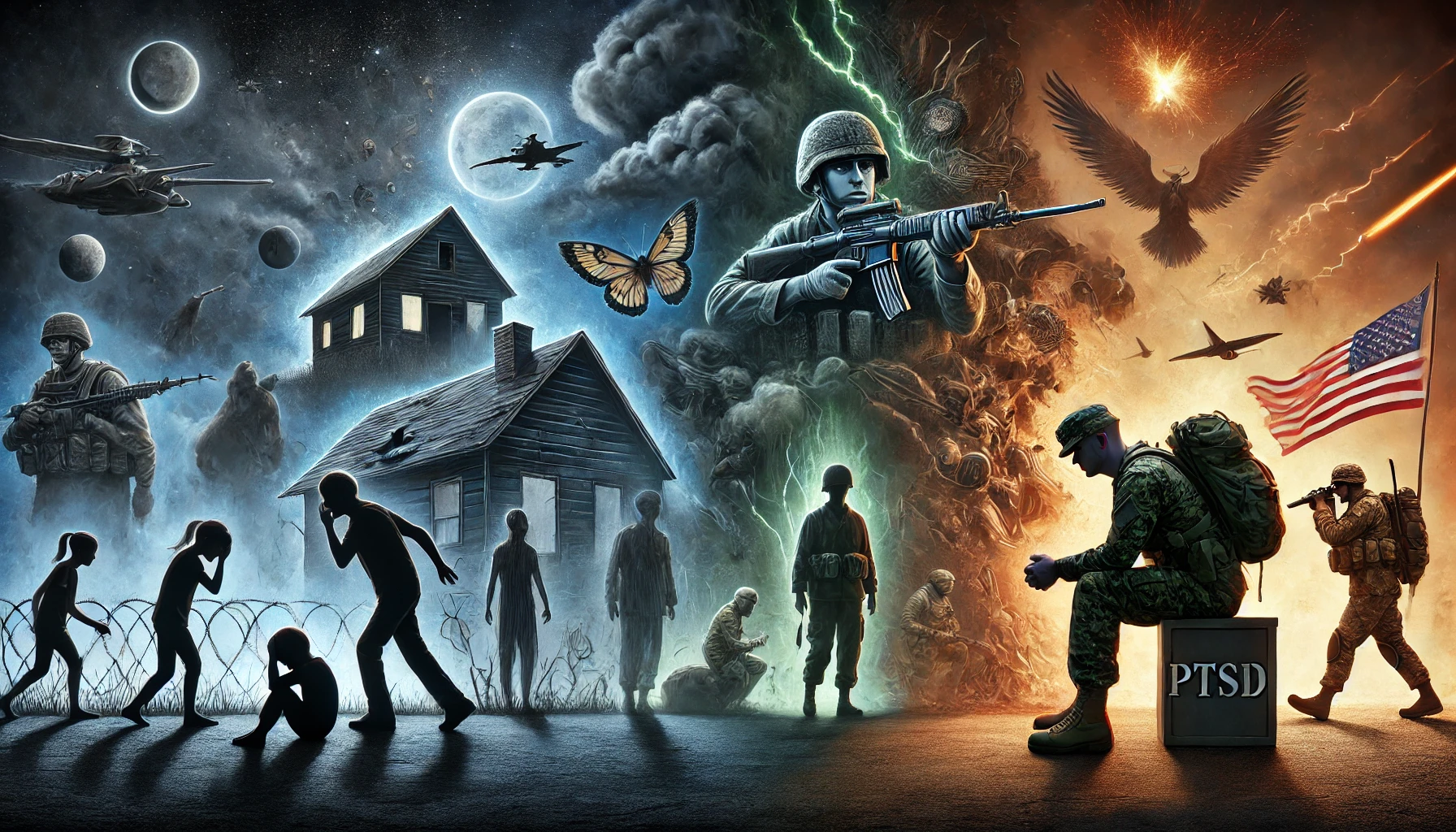When we think about the experiences that shape a veteran’s life, our minds often go straight to the battlefield. We picture the harrowing scenes of combat, the split-second decisions between life and death, and the immense psychological toll that war can take.
But what if the seeds of a veteran’s struggles were sown long before they donned a uniform?
What if the traumas of childhood could lay the groundwork for the psychological wounds of war?
This is the crux of the complex relationship between childhood adversity and the development of Post-Traumatic Stress Disorder (PTSD) in veterans—a connection that we need to understand if we want to truly support those who have served.
The Hidden Impact of Childhood Adversity
Childhood adversity can take many forms—physical abuse, emotional neglect, witnessing domestic violence, or growing up in a household marred by substance abuse or mental illness. These early life experiences have a profound impact on a child’s development, shaping not only their emotional and psychological well-being but also their ability to cope with stress and trauma later in life.
Children who experience trauma are significantly more likely to develop mental health issues, including PTSD, depression, anxiety, and substance abuse disorders. The connection between these early experiences and later mental health problems is well-documented, but what’s particularly concerning is how these childhood traumas can intersect with the experiences of war to create a perfect storm of psychological distress.
The Veteran’s Journey: From Childhood Trauma to Combat Stress
Imagine a child who grows up in a home where violence is a daily occurrence, where the people who are supposed to protect and nurture them are instead the source of their fear and pain. This child learns to survive in an environment of constant threat, but at a great cost—they develop coping mechanisms that may serve them in the short term but ultimately leave them vulnerable to further trauma.
Fast forward to adulthood. This same individual now finds themselves in the military, facing the intense pressures and dangers of combat. The coping strategies that once helped them survive their childhood might fail them in the chaos of war. The hypervigilance that kept them safe as a child now fuels their anxiety on the battlefield. The emotional numbness that helped them endure abuse now makes it difficult for them to connect with their comrades, leaving them isolated in their suffering.
When these veterans return home, the combination of childhood trauma and combat stress can lead to a heightened risk of developing PTSD. The horrors of war may trigger memories of childhood abuse, creating a feedback loop of trauma that intensifies their symptoms and makes recovery even more challenging.
Understanding PTSD as a Complex Condition
PTSD is often misunderstood as a condition that arises solely from the experiences of war. While combat is undoubtedly a significant factor, it’s important to recognize that PTSD is a complex condition with multiple contributing factors. Childhood adversity is one such factor that can predispose an individual to develop PTSD, especially when combined with the extreme stressors of military service.
For veterans who have experienced childhood trauma, the symptoms of PTSD can be particularly severe. Flashbacks, nightmares, and intrusive thoughts may be compounded by memories of childhood abuse, making it difficult for these veterans to distinguish between past and present threats. The emotional regulation difficulties that stem from childhood trauma can also exacerbate the hyperarousal and mood disturbances associated with PTSD.
Moreover, the shame and guilt that often accompany both childhood abuse and the actions taken during combat can create a toxic emotional landscape that further complicates a veteran’s mental health. These intertwined traumas can lead to a deep sense of hopelessness, making it difficult for veterans to seek help or believe that recovery is possible.
The Role of Clinicians in Addressing the Full Scope of Trauma
Given the complex interplay between childhood adversity and PTSD in veterans, it’s crucial that mental health professionals take a comprehensive approach to treatment. This means not only addressing the symptoms of PTSD but also exploring the underlying childhood experiences that may be contributing to a veteran’s distress.
Clinicians who work with veterans need to be attuned to the possibility that their clients’ struggles with PTSD may have roots in their early life experiences. By creating a safe and supportive environment, therapists can help veterans unpack the layers of trauma that have accumulated over the years, enabling them to process both their childhood and combat-related experiences.
Therapeutic approaches that focus on trauma-informed care, such as Cognitive Processing Therapy (CPT) and Eye Movement Desensitization and Reprocessing (EMDR), can be particularly effective in helping veterans work through their past traumas. These therapies can help veterans reframe their traumatic memories, reduce the intensity of their emotional responses, and develop healthier coping strategies.
Building a Stronger Foundation for Veteran Care
If we truly want to support our veterans, we must take a holistic view of their mental health needs. This means recognizing that the traumas of war do not exist in isolation—they are often layered on top of earlier life experiences that have already left deep emotional scars.
By addressing both childhood adversity and combat-related trauma, we can help veterans build a stronger foundation for recovery. This approach not only improves their chances of overcoming PTSD but also empowers them to break free from the cycle of trauma that has defined their lives.
In conclusion, the connection between childhood adversity and PTSD in veterans is a crucial area of focus for both clinicians and those who support our military service members. Understanding this relationship allows us to provide more effective care, ensuring veterans receive the comprehensive support they need to heal and thrive. It’s not just about treating the symptoms—it’s about addressing the root causes of their pain and helping them reclaim their lives.
